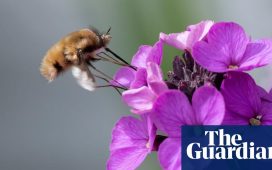If songbirds were fireworks, then the dunnock would be a sparkler. It fills the lulls between the big bangs of the dawn chorus, and though its song fizzes with bright intensity, the fevered notes as high as the highest tune on a piccolo, and then some, it has a thin, faraway quality, as if it always came from the bush beyond. Prunella modularis is never centre stage, always whistling from the wings. Yet, as anyone who has learned about its bizarre menage-a-trois sex life knows, you need to watch the quiet ones.
The ageing limbs of an old willow at the waterside had long since begun the inexorable peeling-banana-skin collapse outwards that rends all abandoned pollards. It was in this tree that one dunnock had sung habitually through the dark dawns of February. But this morning it was wren o’clock and four, five, maybe a hundred birds were outshouting it – if the dunnock was even still at its perch. All around the willow, the wrens trilled with imperious invisibility from a broad and dense metre-high stand of the previous year’s willowherb.
A little farther down the riverbank of this flooded field, the wrens thinned out. A scatter of young alders poked out of shoulder-high vegetation, and a pair of blue tits were engaged in a love chase or a get-outta-my-face territorial pursuit, chirruping calls of delight or fury each time they landed or took off. And then came a brief unmistakable burst of dunnock song, a phrase just long enough that the bird might have been calling: “Can you see me?” It sang again. The same phrase, the same length. And again.
The faraway bird was, as is often the case, closer than I thought. And with the birder’s ludicrous hunger for a sighting, I started to sway my head from side to side, as if I could somehow weave my eyes through the undergrowth to reveal it.
Ridiculous, but it often works, for there was the dunnock, openly concealed, lodged on a bough in the thicket, beak shut, refusing to perform. All down its neck and shoulders, I saw its characteristic sprinkle of splashes, the dead lead colour of a firework sparkler – after it has gone out.













